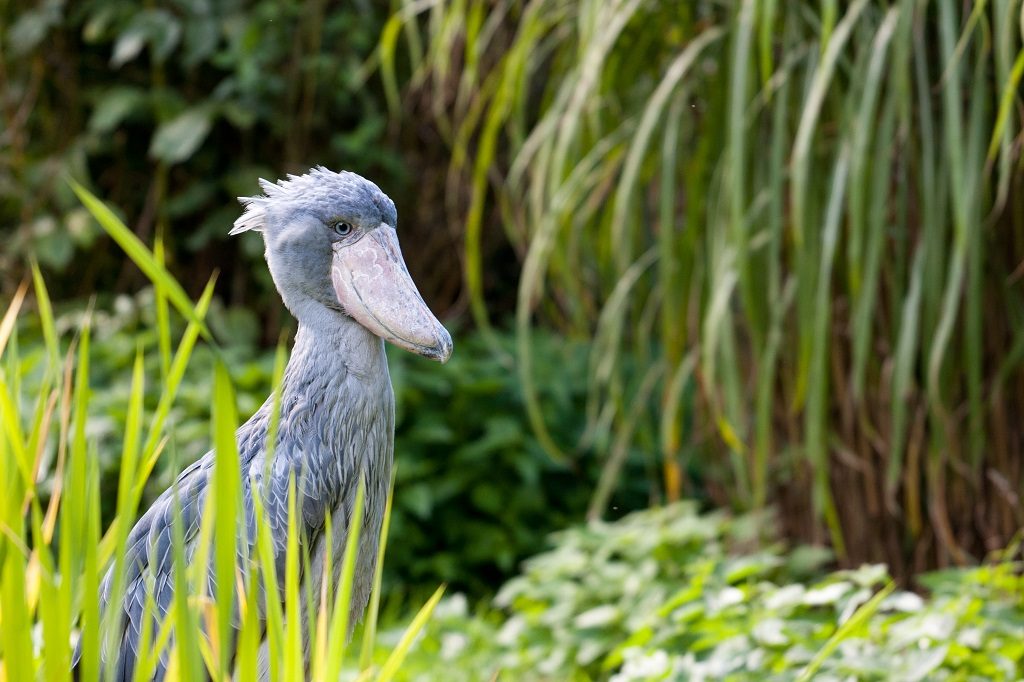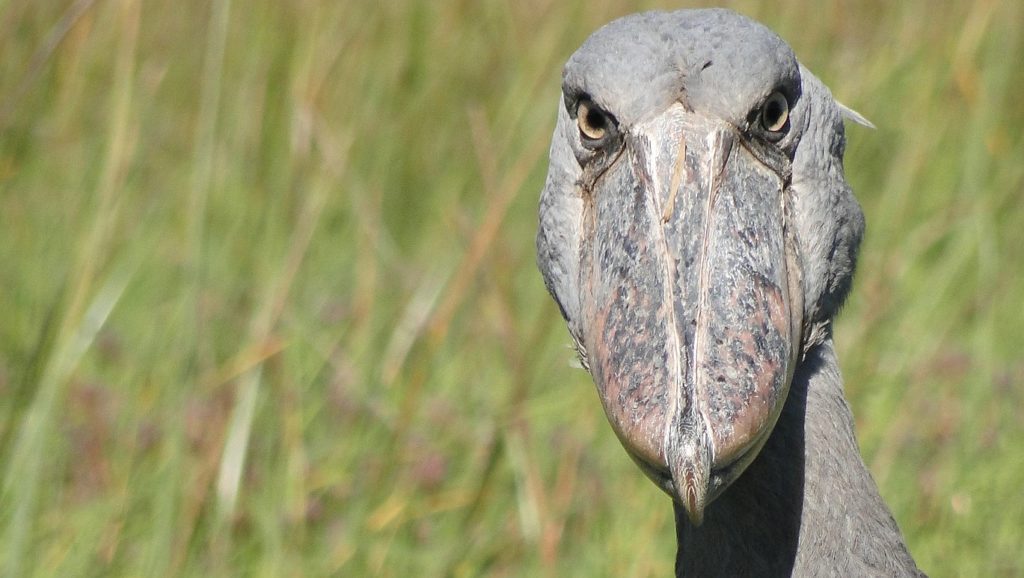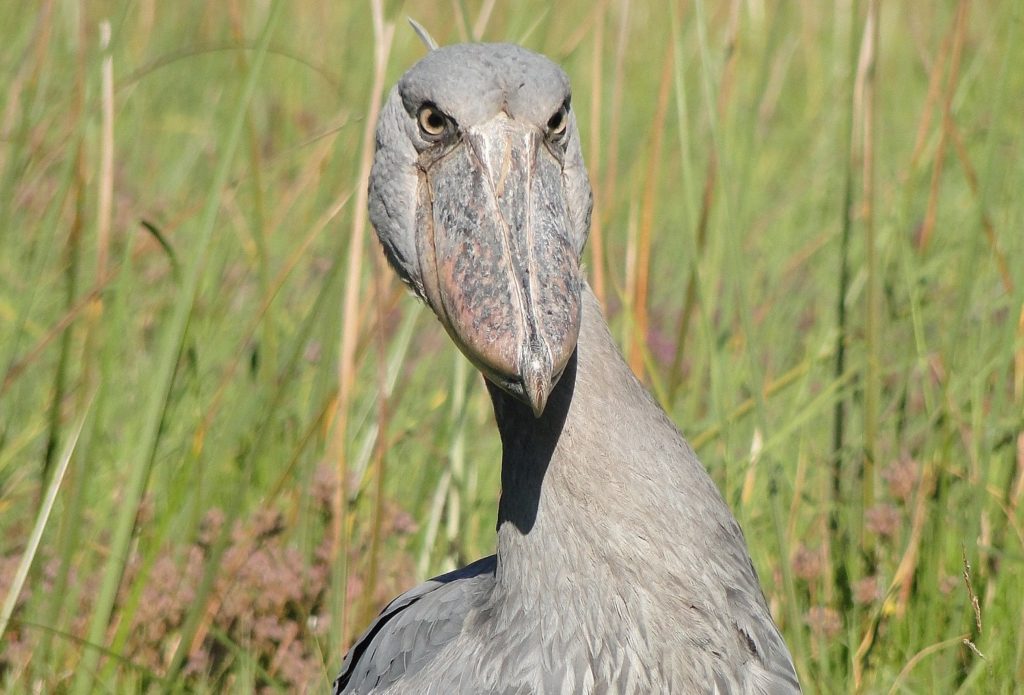In light of their upcoming Shoebill Safari in June 2020, Robin Pope Safaris shares with us why they have a safari itinerary dedicated to finding this elusive bird – along with other stunning feathered species – in the Bangweulu Wetlands.

© Milestoned – Flickr
In one of the most remote parts of Zambia, there is a north-eastern wilderness called the Bangweulu Wetlands, which homes a creature that is decidedly pre-historic looking, with eyes that would win any staring contest and an enormous shoe-shaped bill. This fascinating bird is called the shoebill (Balaeniceps rex), also known as the shoe-billed stork or whale-headed stork because of its unusually formed beak.
Where once the Bangweulu Wetlands suffered from devastating poaching of wildlife and fish stocks, fortunately for these birds, Zambia’s globally significant swamps are now a refuge where the shoebill is actively protected by African Parks and neighboring communities who protect the 10 nests. The shoebill is listed on the IUCN Red List as vulnerable, so dedicated efforts like this are even more important.

The shoebill’s notoriously deathly stare © Robin Pope Safaris
But what else do we know about these extraordinary waterbirds? Well, here are five of some of the most interesting facts about them, which hopefully will inspire you to find out more:
Hippos are their friends (well sort of)
Sharing the same swampy patch with hippos has proven to be quite useful for shoebills. As a hippo charges through swamps thick with reeds, they open these otherwise inaccessible watery channels to the shoebill that can then use them to fish. Better still, the hippo forces the fish up to the surface, making them easier to catch.
Their maternal instincts are questionable
In the world of shoebills (and other species), the parents are not ashamed of having a favorite ‘child’. While they may hatch two or more chicks, it is generally just one that survives and that is, of course, the strongest. Weaker chicks will be bullied by their tougher siblings, even to the extent of starving them and sometimes outright killing them.

As King of the Swamps, the shoebill clearly has some attitude © Robin Pope Safaris
They might be as tall as you
If water birds had a basketball team, shoebills would undoubtedly make the team, along with their wading counterparts the saddle-billed stork and giant heron. At 1.5m in height, they stand as high as celebrities like Lady Gaga and Kourtney Kardashian. They are often found standing tall and statue-like on a clump of water vegetation and then moving slowly while watching for fish.
They chat like gunfire
While shoebills are mostly silent, when they do make a noise, it is quite an alarming sound to hear. It is called bill-clattering and can be likened to a machine-gun being fired. They do this around the nest, when greeting another shoebill or sometimes when they are about to strike prey. The sound can be quite loud and frightening.
Their fishing tactics are a little terrifying
Be thankful you are not a lungfish or even a baby crocodile in the swampy fishing ground of a shoebill. When a shoebill has prey in its sights, it will launch forward with its bill wide open and engulf whatever creature it has found. After shaking its head to rid its mouth of any unwanted vegetation, it will decapitate its prey with the razor-sharp edges of its bill and then gulp it down.
If you want to find out more about these impressive birds or have a chance to see an actual one before your eyes, you may just have to visit the Bangweulu Wetlands with Robin Pope Safaris in June 2020.

Leave A Comment